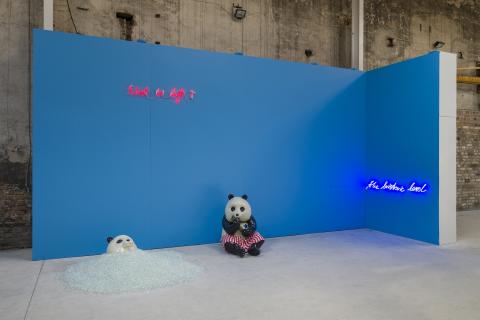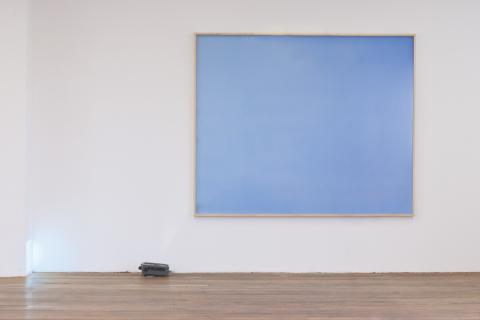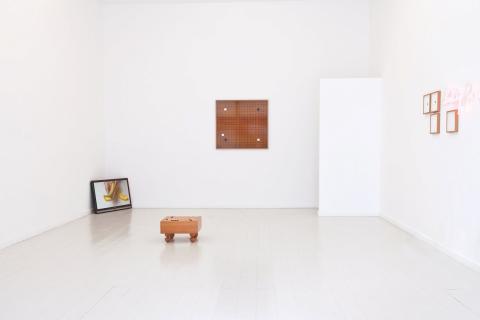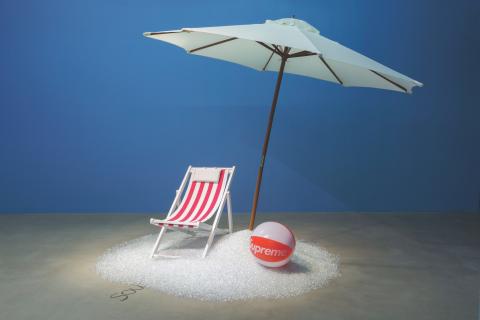Michal Martychowiec
@mmartychowiechttps://michalmartychowiec.com/
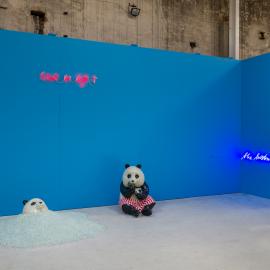
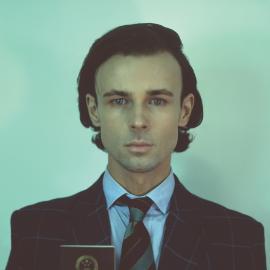
Born 1987 in Lublin, Poland. Lives and works in Berlin, Germany.
Michal Martychowiec creates conceptual series of photographs, films, drawings, neons, objects, mixed media installations and environments.
Martychowiec’s oeuvre consists of a mixed-media practice designed in larger series always developed hermeneutically around expanded topics of the conditions and politics of contemporary human existence and often involve areas of history, invention and autopoiesis of historical narratives and also exploration and occasionally comical recomposition of cultural symbols and archetypes.
Martychowiec’s field of research is primarily based on philosophy, anthropology, art and cultural history, universal historical reflections, the history of religion, literature, archeology and, of course, our contemporary culture and communication analysis.
Furthermore, Martychowiec merges artistic and curatorial practices through a twofold arrangement of his oeuvre. At first, he develops projects as individual narratives introducing specific symbols within a certain field of inquiry. These projects and symbols correspond to one another and later their elements are reenacted and incorporated, through a curatorial activity, into large and complex installations relating to the contemporary sociopolitical landscape.
About the exhibited work
"Sur la plage" is a work developed out of 2 predominant narratives in Martychowiec’s oeuvre. One is that of a crystal beach metaphorically bringing to the present the slogan of 1968 student protests – ‘Sous les pavés la plage’ and the other of a panda as a representation of a contemporary human being.
The work is addressing a few matters. Both pandas placed on this metaphorical beach cover their bodies and as such further establish their humanness (only man is conscious of his/her nudity and so covers particular parts of his/her body – it is customary for women to cover their nipples, but it is not for men).
The panda in the crystal pile (like a child being buried in the sand) is also covered. Not with clothing but with a symbolic element which in the artist’s language among a few other things represents modernisation, institutionalisation and consumerism of the contemporary societies.
The question of man, and nudity, becomes connected with the development of the various apparatuses. The stronger form the ‘institutionalisation’ takes, the stronger the ‘covering’ is required of the members of society. This installation is then placed in the context of two neon works: the historic level is placed on the height of the panda and is borrowing two terms developed by Spanish philosopher José Ortega y Gasset: ‘the historical level’, which to Gasset represented certain averages of the standards of living, education, work and leisure opportunities, and perhaps more importantly ‘the height of the times’ which indicated how we, as contemporary people position ourselves in the perspective of the historical process. Do we consider being at the pinnacle of ‘civilisation’ or do we look with a certain nostalgia to what was in the past?
Our ‘height’ is then represented by the level of history. Having in mind that and the nature of the apparatuses our contemporary existence is entangled in, one should follow up and ask: what is left to us?
Michal Martychowiec creates conceptual series of photographs, films, drawings, neons, objects, mixed media installations and environments.
Martychowiec’s oeuvre consists of a mixed-media practice designed in larger series always developed hermeneutically around expanded topics of the conditions and politics of contemporary human existence and often involve areas of history, invention and autopoiesis of historical narratives and also exploration and occasionally comical recomposition of cultural symbols and archetypes.
Martychowiec’s field of research is primarily based on philosophy, anthropology, art and cultural history, universal historical reflections, the history of religion, literature, archeology and, of course, our contemporary culture and communication analysis.
Furthermore, Martychowiec merges artistic and curatorial practices through a twofold arrangement of his oeuvre. At first, he develops projects as individual narratives introducing specific symbols within a certain field of inquiry. These projects and symbols correspond to one another and later their elements are reenacted and incorporated, through a curatorial activity, into large and complex installations relating to the contemporary sociopolitical landscape.
About the exhibited work
"Sur la plage" is a work developed out of 2 predominant narratives in Martychowiec’s oeuvre. One is that of a crystal beach metaphorically bringing to the present the slogan of 1968 student protests – ‘Sous les pavés la plage’ and the other of a panda as a representation of a contemporary human being.
The work is addressing a few matters. Both pandas placed on this metaphorical beach cover their bodies and as such further establish their humanness (only man is conscious of his/her nudity and so covers particular parts of his/her body – it is customary for women to cover their nipples, but it is not for men).
The panda in the crystal pile (like a child being buried in the sand) is also covered. Not with clothing but with a symbolic element which in the artist’s language among a few other things represents modernisation, institutionalisation and consumerism of the contemporary societies.
The question of man, and nudity, becomes connected with the development of the various apparatuses. The stronger form the ‘institutionalisation’ takes, the stronger the ‘covering’ is required of the members of society. This installation is then placed in the context of two neon works: the historic level is placed on the height of the panda and is borrowing two terms developed by Spanish philosopher José Ortega y Gasset: ‘the historical level’, which to Gasset represented certain averages of the standards of living, education, work and leisure opportunities, and perhaps more importantly ‘the height of the times’ which indicated how we, as contemporary people position ourselves in the perspective of the historical process. Do we consider being at the pinnacle of ‘civilisation’ or do we look with a certain nostalgia to what was in the past?
Our ‘height’ is then represented by the level of history. Having in mind that and the nature of the apparatuses our contemporary existence is entangled in, one should follow up and ask: what is left to us?

